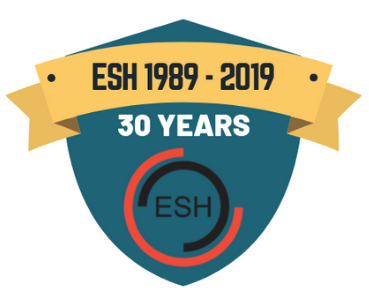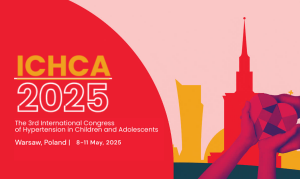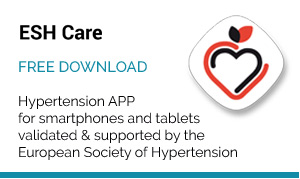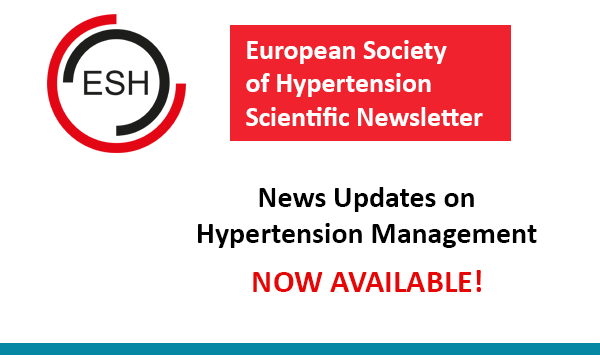Hypertension 2008
Day 1 of ESH 2008
Peter Nilsson & Krzysztof Narkiewicz
- As one of the world’s most widespread diseases, hypertension not only poses its own specific threats and challenges but it also contributes to heightened risk of various cardiovascular diseases and renal failure. Fortunately, increased scientific inquiry is contributing to a better understanding of hypertension, its contribution to numerous disease process, and more treatment options for patients with chronic elevated blood pressure.
The latest in clinical trial research was highlighted at Hypertension 2008, the 18th Scientific Meeting of the European Society of Hypertension (ESH), held jointly with the 22nd Scientific Meeting of the International Society of Hypertension (ISH) and the German Society of Hypertension, from June 14-19, 2008. It had been 6 years since these organizations have held a joint conference and the resulting program offered a unique educational opportunity focused on the study, prevention, and care of hypertension
With more than 8,500 participants, this meeting has been the largest scientific meeting on hypertension in the world. Attendees convened at the International Congress Centre in Berlin, Germany, where investigators presented hundreds of oral and poster sessions, state-of-the-art lectures, breakfast workshops, plenary sessions, late breaker posters, and satellite educational symposia. Among the major topics of interest: the prevention of kidney disease, heart disease and stroke, hypertension in the elderly, hypertension in developing countries, recent results from clinical trials, work on a vaccine for hypertension, lessons learned from evolutionary aspects of cardiovascular biology, the latest in stem cell therapy, and the global significance of cardiovascular disease.
Program Highlights
The increased interest in hypertension was evident in the outpouring of abstracts submitted for this meeting. While ISH normally receives about 1,200 abstract submissions, ISH President Professor Lars H. Lindholm said the number more than doubled – to about 2,600 – for this joint meeting, prompting him to note that this was likely “the biggest hypertension meeting ever.”
Conference presentations strongly emphasized state-of-the-art research, providing new answers to old questions. For example, according to Professor Detlev Ganten, Congress President, the Presidential Symposium focused on the renin-angiotensin-aldosterone system (RAAS), “which is an old system (with) very new data on the complexity of the system and the success of new drugs that interfere with the RAAS. Inhibitors of the renin angiotensin system count among the best tolerated, most effective drugs.” Dr. Ganten, who also heads Charité-University Medicine in Berlin, noted that during the day-long Presidential Symposium, attendees learned more new players in the RAAS, including those that target renin reception and others such as the AT2-receptor, ACE2, and angiotensin- (1-7).
Other sessions spotlighted late-breaking and recently published clinical trial data, including news from
- the ONTARGET study, in which investigators compared the ACE inhibitor ramipril, the angiotensin receptor blocker telmisartan, and the combination of the two drugs in patients with vascular disease or high-risk diabetes;
- final results from the ESCAPE trial that evaluated nephroprotection via intensified blood pressure control;
- ADVANCE, which contrasted the effects of intensive versus standard glucose control on macro- and microvascular events in the largest morbidity-mortality trial conducted in patients with type 2 diabetes;
- a look at blood pressure in the very elderly in the HYVET trial;
- and the groundbreaking news from the ACCOMPLISH trial, in which two single-pill combinations both lowered blood pressure, but the ACE inhibitor/calcium channel blocker combination produced a 20% reduction in cardiovascular mortality and morbidity compared to an ACE inhibitor/ diuretic combo.
Other trials of interest, especially to the practicing clinician, included the realities of coronary prevention in Europe as seen through a comparison of the EUROASPIRE I, II, and III surveys; and the preliminary data gleaned from the Finn-HOME trial in which researchers found that home blood pressure readings are a stronger predictor of mortality than clinical readings.
Additionally, Professor Richard Horton, Editor-in-Chief, The Lancet, held forth in a lively discussion of the “Global Burden of Cardiovascular Disease: A Major Public Health Problem,” urging conference goers to “strengthen their voices” and participate in the way policies are being shaped in their countries.
Adding to the growing public health problem is the rising numbers of individuals considered obese and those with comorbid diseases such as diabetes. Professor Stéphane Laurent, President of the European Society of Hypertension, said “Hypertension is the number one cause of death and disability in the world. The problem is we have made considerable progress in the care of various cardiovascular diseases, but now we are facing an epidemic of obesity and diabetes, which are major risk factors for hypertension and they are increasing the rate of hypertension.”
Take-Away Messages
One personal expectation Professor Laurent saw fulfilled by these scientific sessions was that all specialists continued to “appreciate hypertension and its management, that they better understand the pathogenesis and pathophysiological links of hypertension,” so that they will continue to be fully motivated to reduce cardiovascular complications of hypertension. He saw the international aspects of the meeting supported this goal, aided by the fact that the meeting was designed not just for hypertension specialists, but cardiologists, neurologists, diabetologists and others focused on diabetes. Both experienced practitioners and medical students found that the programs offered valuable information on what has become the number one cause of death in the world.
In addition to sessions concentrating on clinical knowledge and skills, there also were cutting-edge science presentations, including new areas such as evolutionary medicine which has caught the interest of many scientists and clinicians. The research focused on how evolution may explain the development of various diseases and provide implications for better treatment. For instance, the human body remains conditioned for shortages that were common to humans living in prehistoric times; today, the challenge is the great difficulty coping with excesses, such as too much food, too little activity, and way too much sodium in the modern diet. Blood pressure itself reacts robustly to simple preventive measures, such as a balanced diet. The task of medical science is to take this knowledge and evolve to the next step of discovering how to determine when, for example, a balanced diet alone will sufficiently reduce blood pressure elevations or when medications are required for disease prevention.
The diverse offerings of Hypertension 2008, said Professor Jaochim Hoyer, President of the German Society of Hypertension, offered a great deal of information clinicians could quickly incorporate into their practices. Attendees came “away from the Congress with the latest guidelines and treatment recommendations,” that will directly impact how patients are treated and lives improved.
Comprehensive coverage of Hypertension 2008 includes more than 80 webcasts, video news segments, and audio podcasts; news reports of various highlighted sessions; and features from the scientific sessions. We encourage you to spend some time reviewing Hypertension 2008 coverage on this website and familiarize yourself with some of the terrific material summarizing this important meeting.
| Peter M. Nilsson Web editor Malmö, Sweden peter.nilsson@med.lu.se |
Krzysztof Narkiewicz Web editor Gdansk, Poland knark@amg.gda.pl |






